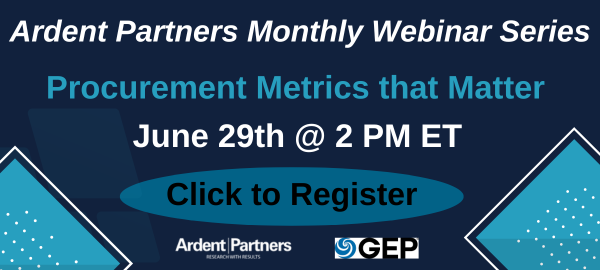Over the last few years, the contract management (or contract lifecycle management) solution space has seen some exciting new innovations, after lagging behind other areas in the supply management space for some time. These new entrants are driving a renewed focus on contract management solutions. In this piece, we explore Automated Contract Compliance, Enhanced Services Management, and Vendor Performance.
Automated Contract Compliance
Over the past decade, the general level of competition has expanded dramatically and suppliers now compete for business across a much wider range of areas than simply price. Pricing, in general, has become more complex, but service levels, revenue models, and contract financing structures have too. The result is much greater complexity in supplier contracts.
There is no doubt that digitizing a business’ procurement contracts and gaining a broad view into them and all associated obligations can drive value by enabling greater contract compliance and plugging savings leakage. While digitized ‘header-level’ information aggregated in a single location is helpful, the line-item price audits and other compliance efforts that drive great value have traditionally been a largely-manual effort.
However, this is changing with new solutions that can streamline and automate compliance in an advanced and powerful way. These solutions draw out more than basic header-level data and the operational and process info that tracks how contracts are managed. They can capture specific contract obligations, complex pricing schedules, payment terms, associated service-level agreements (“SLAs”) and other guarantees. After extracting data from existing electronic files (like PDFs and Word docs) and images (like JPGs and PNGs), the systems can automatically match or compare them to actual transactions and results.
These capabilities place innovative contract management systems at the intersection of big data management and analytics. These new systems have the ability to take large amounts of unstructured contract data (i.e., obligations, performance SLAs, pricing) and extract and parse it so that it becomes usable intelligence that can support better supplier management, governance, and invoicing. By capturing and centralizing key contract details and organizing them in a way to automate contract and compliance management, the system helps procurement and other stakeholders track and manage key supplier obligations and their performance while ensuring that supplier invoicing matches what was contracted.
With invoice processing, some modern contract management solutions are able to match orders and use contractual pricing structures to automatically calculate expected invoice values (or pro-forma invoices) before they are received to better manage price compliance. This enables the system to flag mistakes, exceptions, and variances in the invoice matching process and calculate what the value of a supplier invoice should be while also providing a platform for suppliers and AP (or the buying organization) to collaborate and resolve any potential discrepancies or disputes if the actual invoice does not match calculated value.
Enhanced Services Management
There are many implications in moving to an “everything-as-a-service” economy. Chief among them is that a services contract generally requires more effort and focus to manage properly than other contracts. Traditional services contracts tend to be managed more closely by the business stakeholders, but this also happens with on-demand/subscription-based contracts, where the cost is based on usage and/or time and the users are needed to track not only usage but also quality and the other service levels and features that are embedded in the subscription or per-usage cost.
With an ability to extract and present service-level terms to the users, procurement can regain a voice in the overall supplier management discussion and leverage best practices in new RFPs. This is valuable and important because it enables procurement to help the business make smarter decisions when it comes to evaluating subscription renewals or changes and avoid costly and inopportune auto-renewals.
Transforming Vendor Performance
Supplier relationship and supplier performance management have been areas traditionally reserved for the most mature of procurement organizations as most groups struggle to manage their suppliers at the contract level. That has started to change over the last few years with newer, more advanced contract management solutions enabling more procurement teams to launch programs and advance in this area. Today, traditional supplier performance management utilizes stakeholder surveys and scorecards. The reality is that while these tools can give procurement a general sense of how the stakeholders feel about a supplier’s performance, they often fail to capture a more quantified assessment of how a supplier performs against its actual contractual obligations.
Since most business stakeholders never perform detailed reviews of a supplier contract, their supplier evaluations can lack the context needed to fully-assess supplier performance. This means that there can be a wide variance between stakeholder expectations and how a supplier should be performing. For example, as supplier negotiations and their resulting contracts become more complex, the categories and support that suppliers deliver can shift over time outside the view (and understanding) of business users. By capturing contractual terms, including pricing and targeted service levels, and then tracking actual supplier performance, these newer contract systems empower procurement and the business users with richer context to evaluate supplier performance and to communicate issues and successes back to suppliers with greater accuracy and in a more-timely way. By improving the vendor performance feedback loop, procurement can collaborate with suppliers in formal and ad hoc reviews so that poor performance can be addressed before the issue become chronic and good performance can be more clearly identified, rewarded, and repeated.


